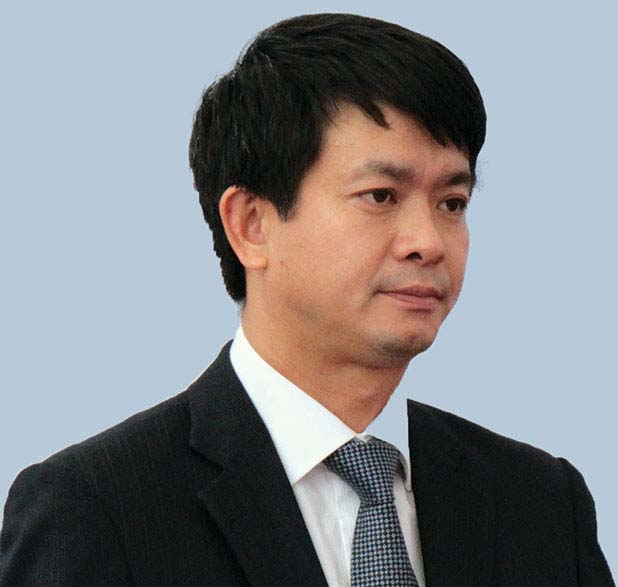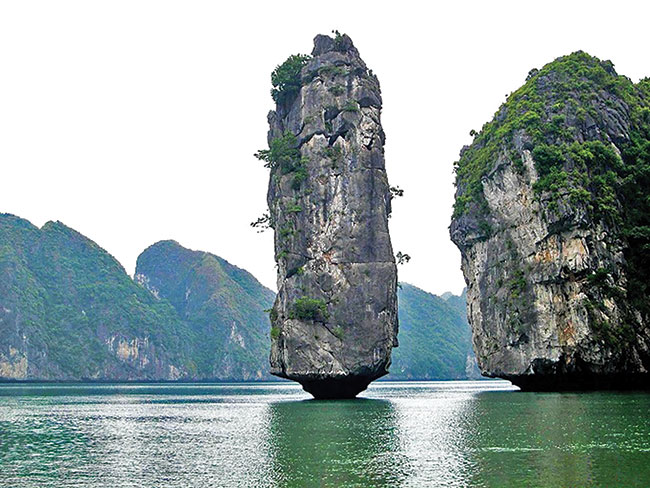Quang Ninh rolls out master plan
 On May 30, 2015, Quang Ninh People’s Council enacted Resolution 142/NQ-HDND approving the provincial tourism development master plan towards 2020, with a vision towards 2030. Could you tell our readers about the main targets in this plan?
On May 30, 2015, Quang Ninh People’s Council enacted Resolution 142/NQ-HDND approving the provincial tourism development master plan towards 2020, with a vision towards 2030. Could you tell our readers about the main targets in this plan?
The tourism development master plan is one of the seven strategic planning schemes of the province which was drawn up in accordance with the strict international processes of BCG, a prestigious consultancy group from the US.
In light of this plan, Quang Ninh will develop its tourism sustainably with a high level of professionalism, turning tourism into a spearhead economic sector with an ever-growing proportion within the province’s economic structure.
Additionally, tourism development will be linked closely with the protection of the province’s natural resources, keeping traditional values intact, caring for the ecological environment, while boosting the marine economy. Promoting inter-regional links in tourism development has been set as a key focus.
In respect of development targets, we are committed to turning Quang Ninh into a world-class tourism destination – a premier location in Vietnam with a modern and synchronised infrastructure system, and diversified tourism prospects to give us a competitive advantage in both the regional and international arena.
The province is set to welcome 10.5 million visitors (four million international visitors), generating a total revenue of VND30 trillion ($1.4 billion), and directly employing 62,000 workers by 2020.
By 2030, the number of visitors to Quang Ninh is expected to reach 23 million (10 million international visitors), generating VND130 trillion ($6.07 billion) in total revenue and providing direct employment for 120,000 labourers.
Quang Ninh has tremendous potential for tourism development, but how exactly will the province implement this breakthrough in tourism development?
First, we have worked on regional tourism orientations and set diversified tourism products matching the natural development conditions of each region. Accordingly, the province will consist of four major tourism areas. The first is Halong tourism zone, including Halong city, Cam Pha city, and Hoanh Bo district with sea and island tours, sea bathing, and other recreational activities on Halong Bay, as well as shopping etc.
The second is the border tourism zone, including Mong Cai city and some local districts, with sea tours and other tourism activities. The third is cultural-historical and spiritual tourism zone (Uong Bi, Quang Yen, and Dong Trieu) with tours to famed sites such as Yen Tu Mountain, Ba Vang pagoda, and Tran Dynasty historical relics. And the fourth is Van Don-Co To tourism zone offering high-end ocean tours (including a casino) and adventure tours.
Second, tourism products and services will serve specific customer demographics, focusing on top priority segments. There will be four major segments: luxury, discovering Vietnam’s charm’ tours, northern visitor segment and spiritual tourism.
Third, we will promote regional links. We have set breakthrough targets to spur tourism development. Accordingly, from now until 2020 we aim to create breakthroughs capitalising on the advantages of Halong and Yen Tu, whereas for the period from 2021 to 2030 the breakthroughs will be based on Van Don-Co To and Mong Cai.

Quang Ninh authorities have tailored their master plan to suit stratified target markets
What efforts has the province made to realise the master plan on tourism development?
To realise the master plan, the provincial management has committed to focusing its resources on developing a
comprehensive tourism infrastructure system in four major tourism areas as stated above. For instance, in Van Don-Co To tourism zone, the province will give priority to implementing major projects such as building Quang Ninh airport, a wharf to receive large tourist ships, high-end hotels and a resort complex (including a casino and a golf-course).
Aside from that, developing the local transport infrastructure is also a key focus. In recent years, the province has endeavoured to carry out projects of great significance, such as bringing electricity to Co To island and island communes in Van Don district, building main highways, and Quang Ninh airport.
The projects have changed the face of the province’s tourism sector, helping to draw more and more investors and visitors to the province.
The conference on inter-regional tourism co-operation and development took place in the province late last week and will run until June 16. How will you establish the vital links to boost the development of provincial tourism?
This conference aims to promote tourism co-operation and development between Quang Ninh, some other northern locations, and Ho Chi Minh City.
We have set forth concrete targets in respect to fostering inter-regional links. Specifically, the number of visitors from Ho Chi Minh City to stakeholder northern provinces and vice versa is expected to increase 5 per cent annually, creating new tourism offerings in stakeholder provinces to serve visitors, and stepping up co-operation to improve products and the quality of human resources in the tourism sector in relevant locations.
What are the key measures to ensuring that the targets of the master plan are met?
Current estimates state that the provincial tourism development plan would need a colossal capital volume ranging from VND68 trillion ($3.17 billion) to VND136 trillion ($6.35 billion), most of which is far outside the state budget. Therefore, to raise this huge sum, the province will focus on executing certain measures.
First in this list of measure will be attracting domestic and international strategic investors through the simplification of administrative procedures relevant to tourism investment and trade, bettering infrastructure, and lowering environmental degradation in major tourism areas to boost the charm of provincial tourism.
Second, it is important to effectively implement Quang Ninh land use planning to 2020, which was approved to ensure that priority projects do not face delays.
Third, we must carry out diverse planning measures on marketing, branding, and launching new products. This includes upgrading the tourism and transport infrastructure, tourism residences and services, raising the standard of human resource training, standing firm on environmental protection issues, and streamlining public management and co-operation.
What the stars mean:
★ Poor ★ ★ Promising ★★★ Good ★★★★ Very good ★★★★★ Exceptional
Latest News
More News
- Mitsubishi Estate launches Logicross Hai Phong - a milestone in logistics evolution (November 20, 2024 | 14:32)
- Semiconductor workforce partnerships deliver industry-relevant training (November 20, 2024 | 10:58)
- German Quickpack to invest $31.7 million in Long An province (November 20, 2024 | 09:31)
- Foreign-invested enterprises drive logistics investment in the southeast region (November 20, 2024 | 09:27)
- Chile visit underscores trade benefits (November 19, 2024 | 10:00)
- Trump’s second term impacts sci-tech activities and industry 4.0 technologies (November 18, 2024 | 10:00)
- Vietnam eyes nuclear revival to bolster energy security (November 14, 2024 | 16:46)
- Kyokuyo completes $13.5 million seafood factory in Vietnam (November 14, 2024 | 12:19)
- VinFast receives $3.5 billion funding from Vingroup and Pham Nhat Vuong (November 14, 2024 | 06:38)
- Localities sprint to reach FDI targets (November 13, 2024 | 10:00)


















 Mobile Version
Mobile Version